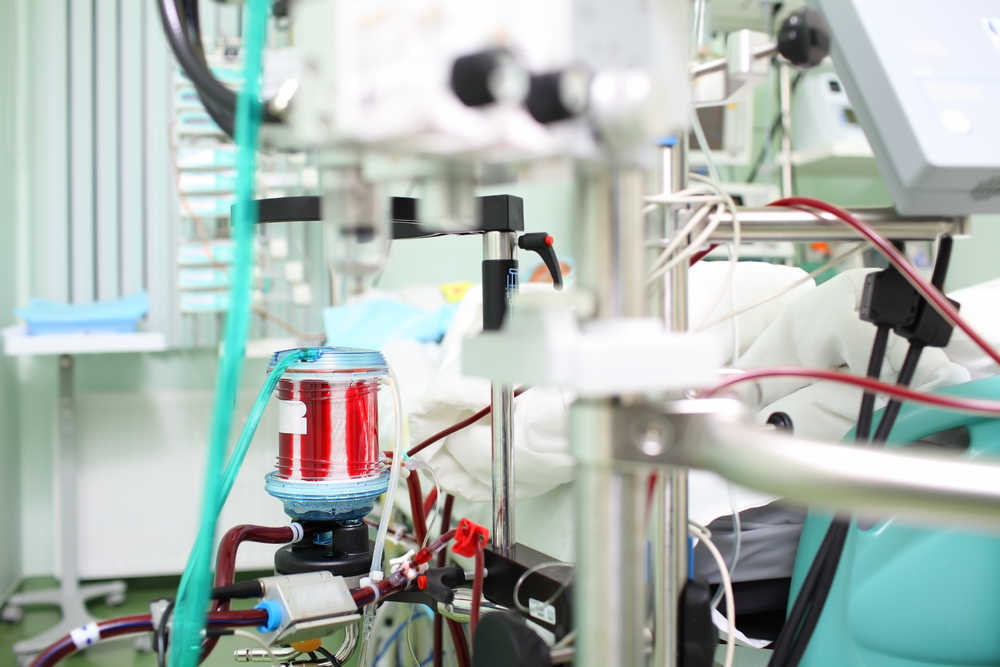A final verdict for ECMO use in severe ARDS?

Discussion of results from the highly anticipated EOLIA Trial
Despite increasingly widespread use, veno-venous extracorporeal membrane oxygenation (ECMO) for severe respiratory failure in adults remains controversial. The 2009 CESAR trial [1] suggested a survival benefit for transfer to an ECMO-capable specialist centre, but it did not provide a direct comparison of ECMO versus not-ECMO (only 76% of patients in the intervention arm received ECMO and many control patients did not receive lung protective ventilation). In this context, the ECMO to Rescue Lung Injury in Severe ARDS (EOLIA) trial aimed to directly compare ECMO with standard care in severe ARDS [2].
Methods
This multi-centre trial randomised adults with severe ARDS who had been mechanically ventilated for <7 days to veno-venous ECMO or protocolised conventional ‘lung-protective’ management. The use of neuromuscular blockade and prone positioning was encouraged in the control group with other adjuncts for hypoxaemia were at the clinicians’ discretion.
Importantly, patients randomised to conventional ventilation could receive rescue ECMO for refractory hypoxaemia (SaO2 <80% for >6hrs). The primary end-point was 60 day mortality.
Results
- 1015 patients were screened for inclusion with 249 patients enrolled over 6 years.
- 124 patients were assigned to the ECMO group and 125 to the control group with appropriate balancing of baseline characteristics between arms.
- Enrolment was ceased early after the fourth interim analysis predicted futility (estimating only a 10% chance of demonstrating efficacy for ECMO had the trial continued).
- The control group received appropriate ventilation strategies with high rates of neuromuscular blockade (100%) and prone positioning (90%).
- At day 60: 44 of 124 patients (35%) in the ECMO group compared with 57 of 125 patients (46%) in the control group had died (relative risk, 0.76; 95% confidence interval [CI], 0.55 to 1.04; P=0.09)
- Severe thrombocytopenia (27% vs 16%) and haemorrhage requiring transfusion (46% vs 28%) was more common in the ECMO group, although the rates of massive haemorrhage were similar. Fewer ischaemic strokes occurred in the ECMO (0%) than control (5%) groups with comparable rates of haemorrhagic stroke.
- 28% of the control group crossed over for rescue ECMO with these patients experiencing a high mortality rate (58%).
Discussion
Overall this trial did not demonstrate the superiority of ECMO over conventional management in severe ARDS.
Ultimately, this trial was statistically underpowered, with the power calculation based on an estimated reduction in 60 day mortality of 20% with ECMO (from 60% to 40%). It is unclear what this was predicated on. It is also worth noting that mortality in the control group was 46% rather than the 60% estimated for the power calculation.
There is no signal to suggest that ECMO is a dangerous therapy in a carefully selected group of patients with severe ARDS who are provided ECMO using modern extracorporeal technology and a suitably trained team.
Take home messages
This was an underpowered trial with a notable degree of crossover from the control group to the ECMO group. Whilst larger than the CESAR trial and more direct in its comparison of ECMO against conventional therapy, it has not answered the question of whether ECMO is superior to conventional therapy for severe ARDS.
Article review prepared and submitted by Ehsan Ahmadnia and Patrick Collins (London, UK) on behalf of the EJRC.
References
[1] Peek GJ, Mugofrd M, Tiruvoipati R, Wilson A, Allen E, Thalanany MM et al. Efficacy and economic assessment of conventional ventilatory support versus extracorporeal membrane oxygenation for severe adult respiratory failure (CESAR): a multicenter randomised controlled trial. Lancet. 2009; 374: 1351-1363.
[2] Combes A, Hajage D, Capellier G, Demoule A, Lavoue S, Guervilly C et al. Extracorporeal Membrane Oxygenation for Severe Acute Respiratory Distress Syndrome. NEJM. 2018; 378: 1965-1975.